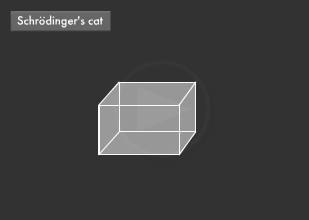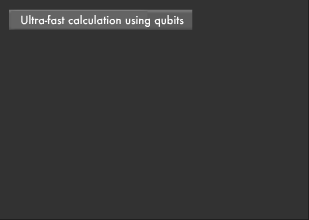Canon Science Lab
Optical Computers
Today's computers use semiconductors to process data, but computers of tomorrow may well use photons.
The CPU, or central processing unit in computers we use today, is made of semiconductors that carry out computations through "On" and "Off" electric signals, but there are limits to the improvements that can be made to this method of computation. Computers of the future are likely to make use of the quantum-mechanical properties of materials, or, in other words, the behavior of particles such as atoms and molecules. Such computers are known as quantum computers, and optical computers are considered to be one of them. Optical computers would process data at ultrahigh-speed, making use of the way light particles (photons) spin to the left or right.
Using the Properties of Photons to Perform Calculations
The key components of optical computers are photons, the particle form of light. (For details, see "Light: Waves or Particles?")
Today's digital computers process data in the form of binary digits, or bits, which have a value of 1 or 0. However in quantum mechanics, it is possible to create photons having values not only of 1 or 0, but also of a combined 1/0 state, called "qubits" (quantum bits). These qubits will be the units used for processing data in the computers of the future.

Qubit Algorithms Are the Key to Practical Application
Qubits are the computer science equivalent of "Schrödinger's cat."
It is impossible to tell whether the cat in the box is alive (1) or dead (0) unless you actually look inside the box (see illustration below). The cat is both dead and alive in an "overlapped" state, just like a qubit.
This cat, both dead and alive until you peek, may strike you as being ambiguous and inconvenient, but its overlapped state until viewed is, in fact, thought to be very convenient, and represents the key to data processing methods (algorithms) of the computers of the future.

Why Qubits Make Ultra-Fast Computing Possible
Let's devote a little more thought to how qubits can be used to create ultra-fast computers.
We explained earlier how qubits combine two states, 1 and 0, and due to this overlap, when two qubits combine in what is known as a state of "quantum entanglement," they come to possess four states simultaneously: 00, 01, 10, and 11. Similarly, when n qubits become entangled, they possess 2n states. As such, a quantum computer can process what would for a digital computer be 2n pieces of data with just n qubits. This is why a quantum computer could process data at ultrahigh speeds.

Actually, bringing optical computers into being depends now on the development of algorithms for enabling qubit calculations and extracting the outcome of those calculations. However, optical computers may not be suited to general-purpose calculations, but would instead probably be employed for specific purposes such as factorization.
